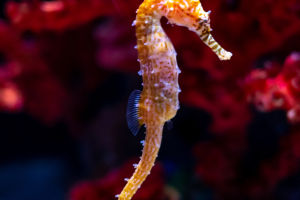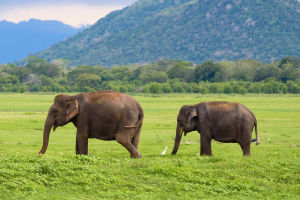Animal songs are an important part of a child's development. These songs have lively melodies and catchy lyrics, allowing babies to easily learn and recognize various animals. These animal songs not only provide entertainment, but also stimulate curiosity, promote language development, and enhance cognitive abilities.
A popular baby animal song is "Old MacDonald Had a Farm". This song introduces children to various farm animals and their sounds. As they sing along, kids can learn about cows, ducks, and more while enjoying an interactive experience of making animal sounds.
Through repetition and imitation, babies develop vocabulary and phonological skills, and they begin to associate animals with the corresponding sounds they make.
Another famous animal song in English is "Five Little Monkeys Jumping on the Bed". This playful song not only teaches counting but also introduces monkeys and their playful nature.
As children sing and perform songs, they will become familiar with the concepts of jumping, counting, and the monkey's mischievous behavior. The song encourages body movement and coordination while strengthening basic counting skills.
"Twinkle, Twinkle, Little Star" is a beloved nursery rhyme that also has an animal story. In the song, the reference to "diamonds in the sky" reminds children of twinkling stars that are often associated with nocturnal animals such as owls.
Through this gentle melody, children develop an appreciation for nature and the night sky, while also learning about nocturnal animals.
In addition to these familiar animal songs, there are many other animal songs in English that babies must learn. For example, Wheels on the Bus introduces various animals encountered on the bus, such as cows, birds, and cats. "BINGO" teaches farm animals names with a dynamic and catchy rhythm.
These songs not only expand children's vocabulary but also increase their familiarity with different animals and their characteristics. Listening to animal songs has many benefits for babies' language development. These songs expose children to new vocabulary and help them improve pronunciation and intonation.
In addition, the repetitiveness of songs helps to strengthen memory. Pleasant melodies and rhymes also create positive associations with language learning, motivating children to engage in language-related activities.
Plus, animal songs provide interactive learning opportunities. Parents and caregivers can sing and dance with their children, encouraging movement and coordination.
Children can also use visual aids or props to enhance their understanding and engagement with the songs. This interactive approach not only enriches the learning experience but also fosters social interaction and connection between parents and children.
All in all, animal songs are an entertaining way of education and a valuable resource for the early education of babies. Through lively songs and interesting lyrics, babies can easily recognize various animals in a happy atmosphere.
These songs not only bring joy and entertainment but also promote cognitive development and language skills. With catchy melodies and catchy lyrics, babies can easily learn about the characteristics of different animals.
The interactive nature of these songs promotes body movement, coordination, and socialization. Let's sing together with the baby, embrace the wonderful world of animal songs, bring joy to the baby, and promote growth.


